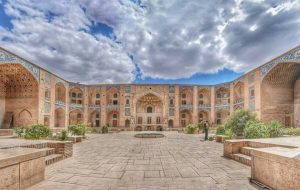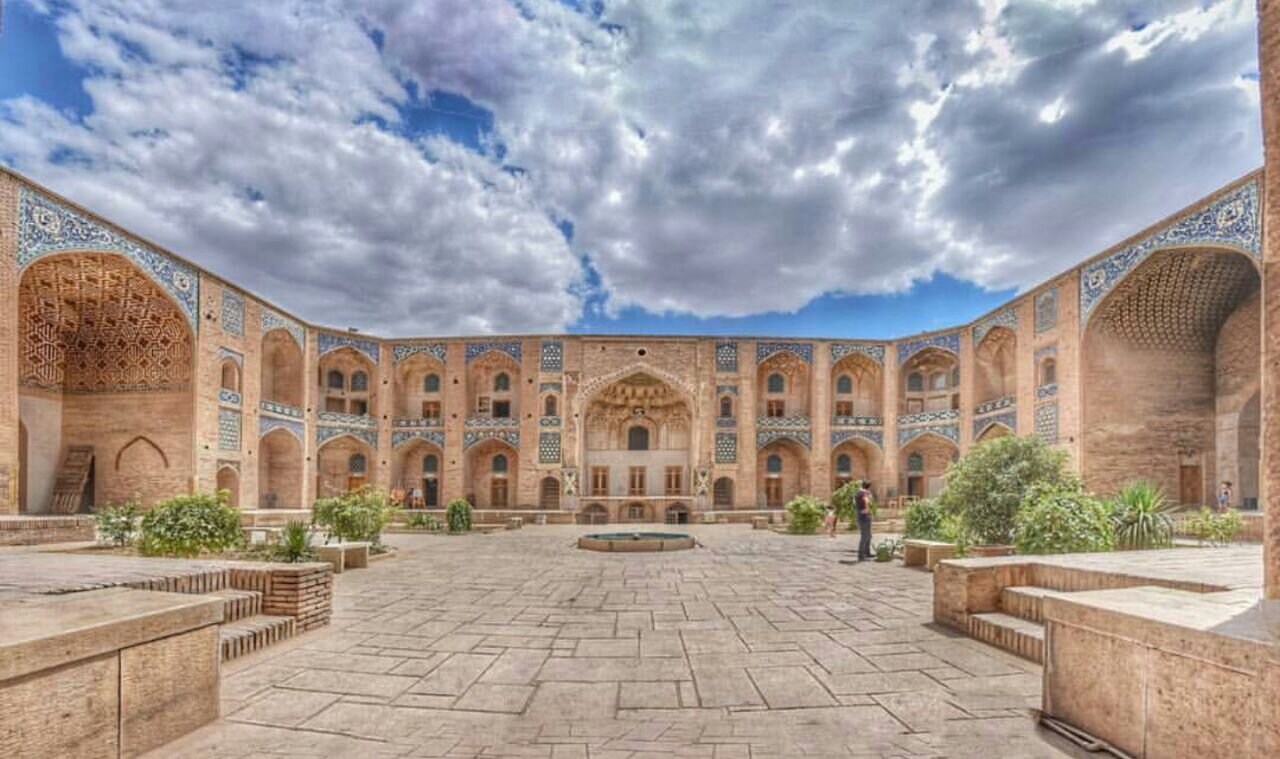Restoration of UNESCO-listed Ganjali Khan caravanserai in Kerman begins
TEHRAN – The restoration and revitalization of the historic Ganjali Khan caravanserai in Kerman, southern Iran, have officially commenced, marking a significant effort to preserve the UNESCO-listed site. The caravanserai, registered in 2023 as part of the “Persian Caravanserai” serial property, is one of 54 Iranian caravanserais recognized for their historical, cultural, and architectural importance.


TEHRAN – The restoration and revitalization of the historic Ganjali Khan caravanserai in Kerman, southern Iran, have officially commenced, marking a significant effort to preserve the UNESCO-listed site.
The caravanserai, registered in 2023 as part of the “Persian Caravanserai” serial property, is one of 54 Iranian caravanserais recognized for their historical, cultural, and architectural importance.
Funded through national allocations, the restoration project focuses on structural reinforcement, plastering, repair of intricate decorative paintings, brick flooring, and the restoration of damaged brick staircases.
As mentioned by the local tourism department, the efforts are aimed at helping preserve the unique artistic and architectural features of the caravanserai, which include exquisite tilework, ornate stucco, and vibrant mural paintings.
The Ganjali Khan caravanserai, a two-story four-iwan structure, was constructed in the Safavid dynastic era as part of the larger Ganjali Khan complex. This 17th-century ensemble also includes a madrasa, mosque, hammam (public bathhouse), water reservoir, and a labyrinthine bazaar, all centered on a large public square in Kerman, southern Iran. The caravanserai now serves as a permanent handicrafts market, showcasing the rich artisanal heritage of the region.
Renowned for its striking interior and exterior tiling, intricate muqarnas, and elaborate decorative elements, the Ganjali Khan caravanserai exemplifies the ingenuity of Persian architecture. Its historical significance is further underscored by calligraphy inscriptions created by Alireza Abbasi, a celebrated Safavid-era calligrapher.
The inclusion in UNESCO’s World Heritage list highlights the broader significance of Iranian caravanserais, which served as essential hubs for travelers, merchants, and pilgrims traversing ancient trade and pilgrimage routes. These roadside inns provided food, water, and shelter while fostering cultural exchanges between people of diverse ethnicities, languages, and religions.
The “Persian Caravanserai” serial property spans multiple periods of Iranian history, from the Achaemenid era (559-330 BC) to the Qajar period (1794-1925), reflecting the enduring importance of caravanserais in facilitating travel and trade. This rich heritage offers insight into pre-industrial travel traditions and underscores the caravanserais’ role in the exchange of ideas and human values over centuries.
AM
